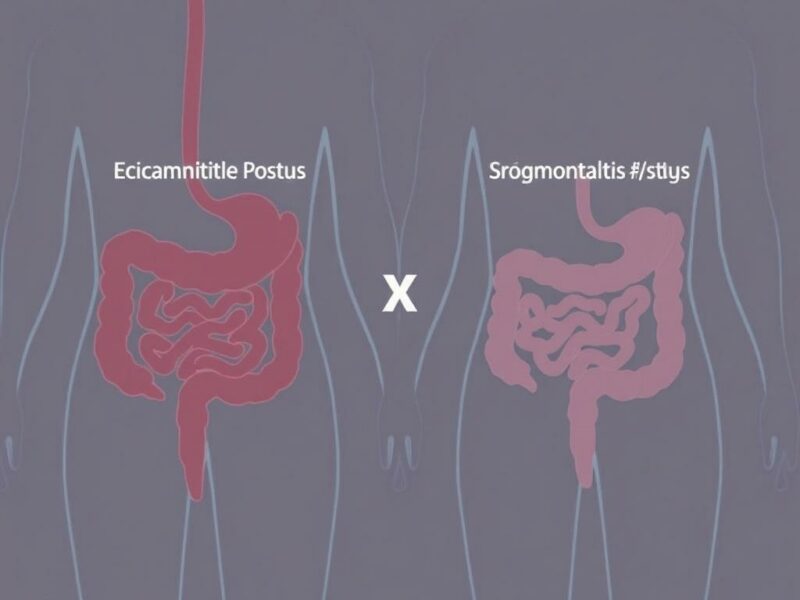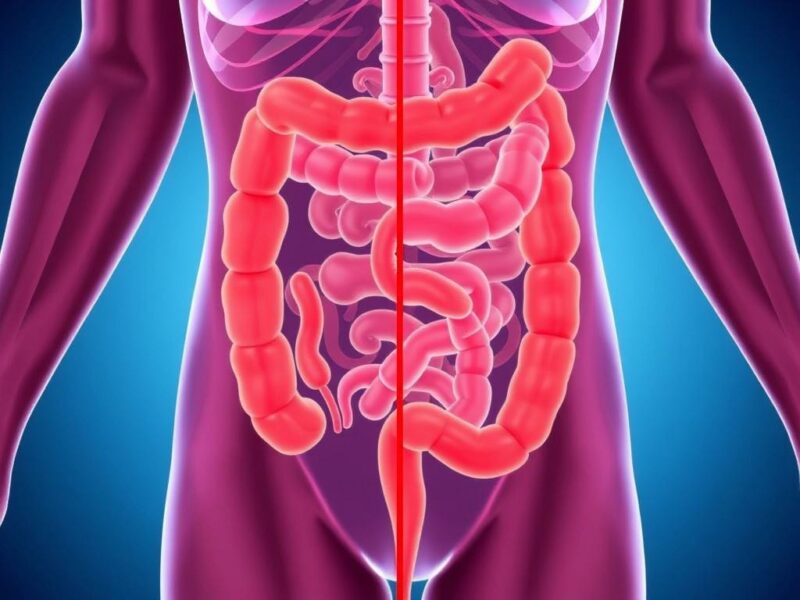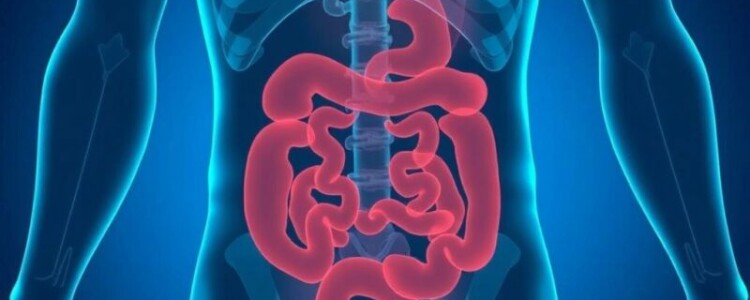When you experience abdominal pain, it’s easy to feel alarmed and confused about what might be causing it. Two conditions that often get compared but are very different are appendicitis and irritable bowel syndrome (IBS). While both can cause discomfort in the abdomen, their causes, symptoms, and treatments are worlds apart. Understanding appendicitis vs. irritable bowel syndrome (IBS) can help you recognize when to seek immediate medical attention and how to better manage chronic digestive issues. In this article, we’ll dive deep into the symptoms, causes, diagnosis, and treatments of each condition to give you a clear picture of what’s going on inside your belly.
What is Appendicitis?
Appendicitis is the inflammation of the appendix, a small pouch attached to the large intestine. The appendix doesn’t have a well-defined function in the human body, but when it gets blocked — often by stool, a foreign body, or swelling — it can become inflamed and infected. This is a medical emergency since a ruptured appendix can lead to serious complications like peritonitis (infection of the abdominal lining) or abscess formation.
Appendicitis usually strikes suddenly, and the symptoms progress quickly. The pain starts around the belly button and then moves to the lower right side of the abdomen. This shift is one of the classic signs, but not everyone experiences it the same way. Besides pain, appendicitis symptoms include nausea, vomiting, fever, and loss of appetite.
Common Symptoms of Appendicitis
- Sudden abdominal pain, often beginning near the navel
- Pain intensity increases and localizes to the lower right abdomen
- Nausea and vomiting
- Low-grade fever
- Loss of appetite
- Constipation or diarrhea in some cases
- Abdominal swelling or bloating
What is Irritable Bowel Syndrome (IBS)?

Irritable bowel syndrome (IBS) is a chronic gastrointestinal disorder characterized by recurring abdominal pain and changes in bowel habits without any detectable damage to the digestive tract. Unlike appendicitis, IBS is not caused by an infection or inflammation. Instead, it’s thought to result from a combination of gut-brain axis disturbances, heightened sensitivity of the bowel, and altered gut motility.
IBS symptoms can vary widely from person to person, making it a somewhat elusive condition to pinpoint. People with IBS may experience diarrhea, constipation, or alternating bouts of both. Unlike appendicitis, the pain in IBS tends to be chronic or recurrent, and typically improves after bowel movements.
Common Symptoms of IBS
- Recurring abdominal cramping or pain
- Changes in bowel movements — diarrhea, constipation, or both
- Mucus in stool
- Abdominal bloating and gas
- A feeling of incomplete evacuation after a bowel movement
- Symptoms often triggered by stress or certain foods
Appendicitis vs. Irritable Bowel Syndrome (IBS): How to Tell the Difference
At first glance, appendicitis vs. irritable bowel syndrome (IBS) might seem like similar digestive issues because they both cause abdominal pain and discomfort. However, they differ fundamentally in their causes, severity, and treatment approaches. Below is a detailed comparison to help you distinguish between these two conditions.
| Feature | Appendicitis | Irritable Bowel Syndrome (IBS) |
|---|---|---|
| Cause | Inflammation due to blocked appendix | Functional disorder with no inflammation or infection |
| Onset | Sudden, rapid progression | Chronic or recurrent |
| Pain Location | Starts near the navel, then shifts to lower right abdomen | Generalized abdominal pain or cramping |
| Pain Characteristic | Sharp, intense, and worsening | Dull, cramping, often relieved by bowel movement |
| Other Symptoms | Fever, nausea, vomiting, loss of appetite | Bloating, mucus in stool, alternating diarrhea/constipation |
| Medical Emergency | Yes – requires immediate surgery | No – managed with lifestyle and medication |
| Diagnostic Tests | Blood tests, ultrasound, CT scan | Exclusion of other conditions, symptom-based diagnosis |
| Treatment | Surgical removal of appendix | Dietary changes, stress management, medications |
Diagnosing Appendicitis vs. IBS
Because they share some overlapping symptoms, it’s important to understand how doctors tell appendicitis apart from IBS. When a patient presents with abdominal pain, a thorough medical history and physical examination are the first steps. In appendicitis, pressing on the lower right abdomen will often trigger sharp pain (a sign called McBurney’s point tenderness). Other signs include guarding or rigidity of the abdominal muscles.
In contrast, IBS diagnosis relies more heavily on symptom patterns and ruling out other causes of abdominal pain, like infections or inflammatory bowel disease. There are no definitive laboratory tests for IBS, but doctors often use Rome IV criteria, which focus on the duration and frequency of symptoms related to bowel habits and pain relief after defecation.
Tests for Appendicitis
- Complete blood count (CBC) to check for elevated white blood cells
- Ultrasound to visualize appendix inflammation
- CT scan – more precise imaging to confirm diagnosis
- Physical abdominal exam – checking for pain and tenderness
Tests for IBS
- Blood tests to rule out anemia, celiac disease
- Stool tests to exclude infections
- Colonoscopy in some cases to exclude inflammatory bowel disease
- Symptom-based Rome IV criteria
Treatment Options: Appendicitis vs. IBS
Treatment for appendicitis is critical and urgent. The inflamed appendix needs to be removed surgically through an appendectomy, either via open surgery or laparoscopy. Delaying treatment risks rupture, which can lead to life-threatening infections. After surgery, antibiotics are usually given to prevent infection, and the recovery is generally quick with proper care.
On the other hand, IBS is a chronic condition that requires ongoing management. There’s no cure, but many people find relief through dietary adjustments like low FODMAP diets, stress reduction techniques, and medications to control specific symptoms like diarrhea, constipation, or abdominal pain. Psychological therapies such as cognitive behavioral therapy (CBT) can also be helpful, recognizing the role of the gut-brain axis in IBS.
Appendicitis Treatment Summary
- Immediate surgical removal of appendix
- Antibiotics before and after surgery
- Hospital stay for observation
- Follow-up care for infection prevention
IBS Treatment Summary
- Dietary management (e.g., avoiding trigger foods, fiber adjustments)
- Medications: antispasmodics, laxatives, or anti-diarrheal agents
- Stress reduction: meditation, therapy
- Regular exercise to promote bowel health
Living with IBS vs. Recovering from Appendicitis

Recovering from appendicitis, although abrupt and urgent, often means returning to a normal, symptom-free life after surgery. Most people bounce back fully within a few weeks, with no lasting digestive issues. However, untreated appendicitis or complications can leave lasting health problems.
IBS is different. Living with irritable bowel syndrome means ongoing self-awareness and management of symptoms. Many people find IBS symptoms fluctuate with changes in diet, stress levels, or hormonal cycles. Establishing a routine with the right foods, regular physical activity, and stress coping mechanisms can greatly improve quality of life.
Tips for Managing IBS
- Identify and avoid trigger foods (common ones include caffeine, dairy, and high-fat foods)
- Keep a symptom diary to track food and stress patterns
- Practice mindfulness or relaxation exercises
- Stay hydrated and maintain balanced fiber intake
- Consult your healthcare provider for personalized medication options
What to Do if You Suspect Appendicitis
- Seek emergency medical care immediately
- Do not eat or drink, in case surgery is needed
- Avoid using painkillers or laxatives that might mask symptoms
- Arrange for prompt transportation to a hospital
When to See a Doctor: Recognizing Warning Signs
Knowing when to seek medical attention can be life-saving. Appendicitis requires urgent evaluation if you experience sharp lower right abdominal pain with fever and nausea. On the other hand, if your abdominal pain is chronic with bowel disturbances but no severe systemic symptoms, you should consult your healthcare provider for assessment of possible IBS or other digestive disorders.
Emergency Warning Signs of Appendicitis
- Sudden, severe abdominal pain
- Fever above 100.4°F (38°C)
- Persistent nausea or vomiting
- Abdominal swelling or tenderness
Signs You Should Discuss with Your Doctor for Possible IBS
- Recurring abdominal pain with altered bowel movements
- Abdominal bloating and gas
- Mucus in stool
- Symptoms that worsen with stress or certain foods
Summary Table: Appendicitis vs. IBS Keywords Used

| Keyword Phrase | Context Used |
|---|---|
| Appendicitis vs. Irritable Bowel Syndrome (IBS) | Used throughout the article to compare the two conditions |
| Appendicitis symptoms | Listed in symptom section and in comparison table |
| Irritable Bowel Syndrome (IBS) symptoms | Detailed in symptom list and comparison |
| Diagnosing appendicitis | Explained with diagnostic tests and physical signs |
| Diagnosing IBS | Covered with Rome IV criteria and exclusion tests |
| Treatment of appendicitis | Discussed as surgical and antibiotic-based |
| Treatment of IBS | Explained with diet, medication, and lifestyle |
Conclusion
Understanding the key differences between appendicitis and irritable bowel syndrome (IBS) is crucial for managing abdominal pain wisely. While appendicitis is a sudden, serious condition requiring emergency surgery, IBS is a chronic functional disorder that calls for ongoing lifestyle changes and symptom management. If you experience sharp lower right abdominal pain accompanied by fever, nausea, or vomiting, seek immediate medical attention as it could be appendicitis. For chronic, fluctuating pain with altered bowel habits, consult your healthcare provider about IBS and explore treatment options to enhance your quality of life. By recognizing and respecting the unique nature of each condition, you can make informed choices and take control of your digestive health.



